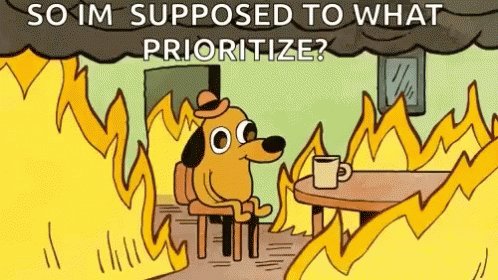Thread
Product managers, let’s chat about prioritization frameworks🧵
Prioritizing features is both an art and a science. I’m a big believer in creating custom frameworks based on the situation, but they’re often inspired by popular frameworks, like RICE, MoSCoW, Kano, etc.
Prioritizing features is both an art and a science. I’m a big believer in creating custom frameworks based on the situation, but they’re often inspired by popular frameworks, like RICE, MoSCoW, Kano, etc.
1. Let's start with RICE: Reach, Impact, Confidence, and Effort. Each feature gets a score based on these parameters. The higher the RICE score, the more priority that feature gets. It’s all about maximizing impact while minimizing effort.
2. Reach = how many users a feature will affect within a given time.
Impact = how much a feature will benefit users.
Confidence = how sure we are of our reach and impact estimates.
Effort = the resources required to develop the feature.
Impact = how much a feature will benefit users.
Confidence = how sure we are of our reach and impact estimates.
Effort = the resources required to develop the feature.
3. MoSCoW stands for Must have, Should have, Could have, and Won't have. It's all about separating the wheat from the chaff. It's a great framework to ensure that the crucial features always get built first.
4. 'Must haves' = critical for the project's success.
'Should haves' = important but not vital. 'Could haves' = nice to have but not necessary.
'Won't haves' = least critical or may not align with the product roadmap.
'Should haves' = important but not vital. 'Could haves' = nice to have but not necessary.
'Won't haves' = least critical or may not align with the product roadmap.
5. MoSCoW is simpler and more qualitative than RICE. It's great when you need to make hard decisions fast. But it can be subjective, and 'must haves' can pile up if you're not careful.
6. Kano helps us understand how different features affect customer satisfaction. It divides features into 3 categories: basic, performance, and delighters.
7. Basic features are expected by the customer - brakes on a car. Performance features are those that the more you have, the better - a car's fuel efficiency. Delighters are the unexpected features that win a customer's heart - a car that gives you compliments on your driving 🙃
8. The Kano Model is all about exceeding customer expectations. But it's not a one-size-fits-all approach. What delights one customer might just be a basic expectation for another. So, constant ✨customer feedback✨ is key.
9. But these frameworks are just tools to aid decision-making, not dictate it. They should be used to facilitate discussions, not replace them. At the end of the day, it's all about delivering value to the customer.
10. It's also important to reassess and re-prioritize regularly. The market changes, customer needs evolve, and your team learns more. What was once a 'must have' might now be a 'could have,' and that's okay!
Mentions
There are no mentions of this content so far.
